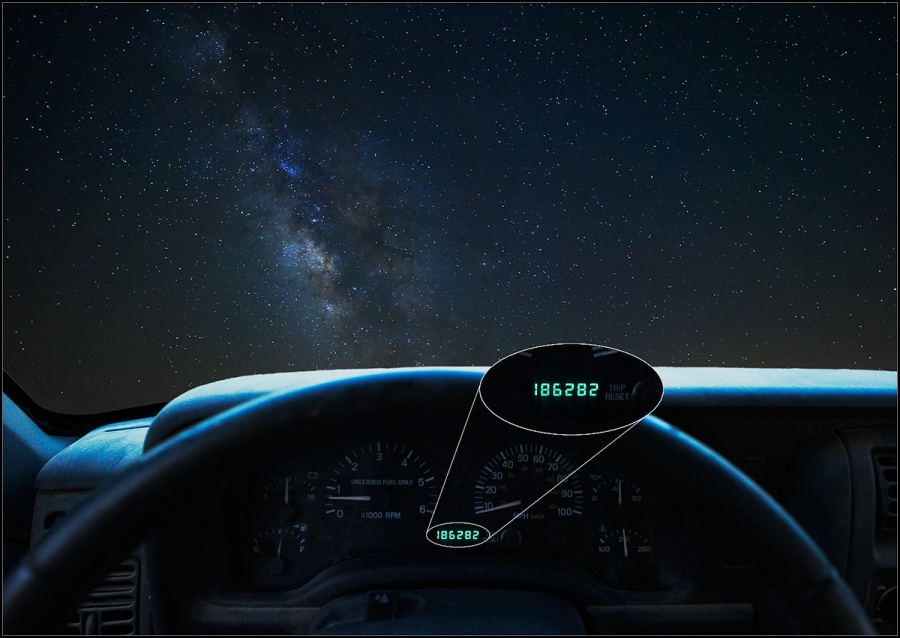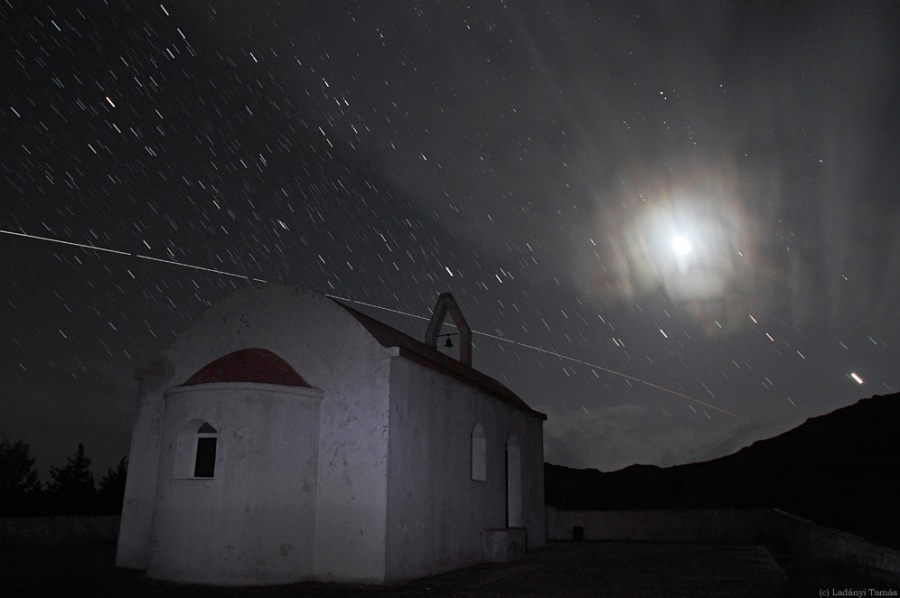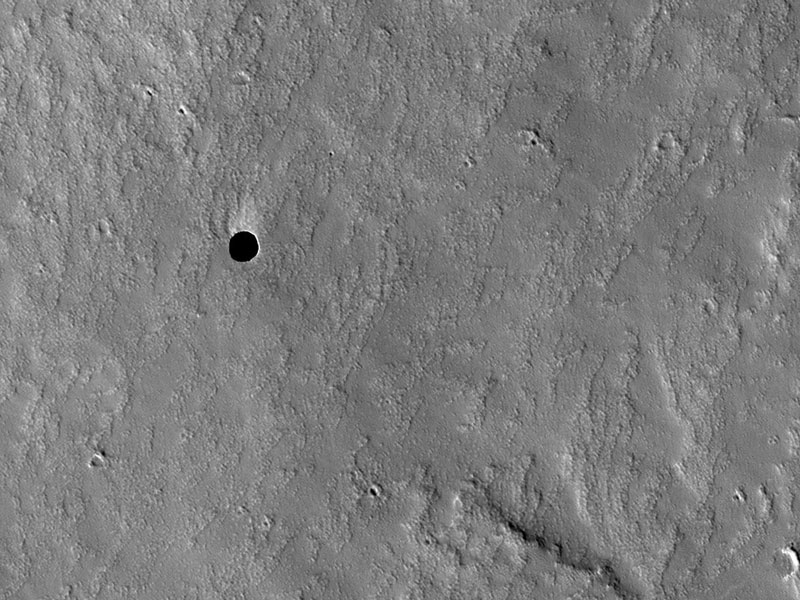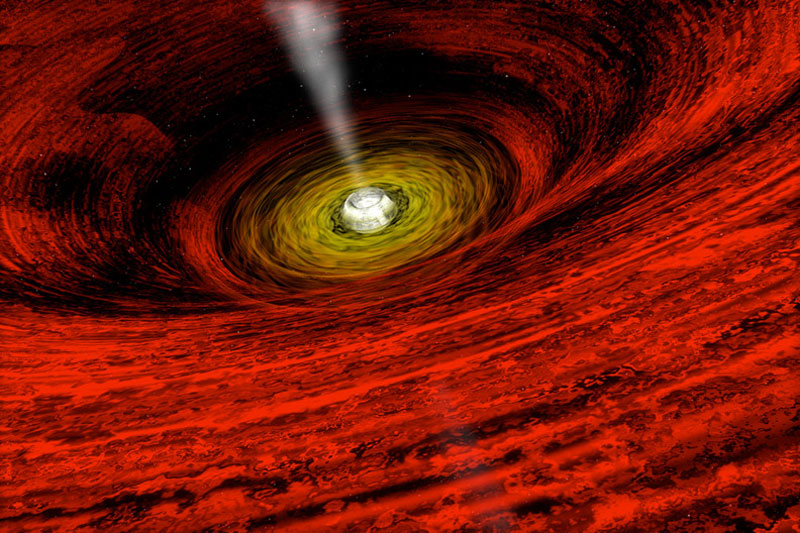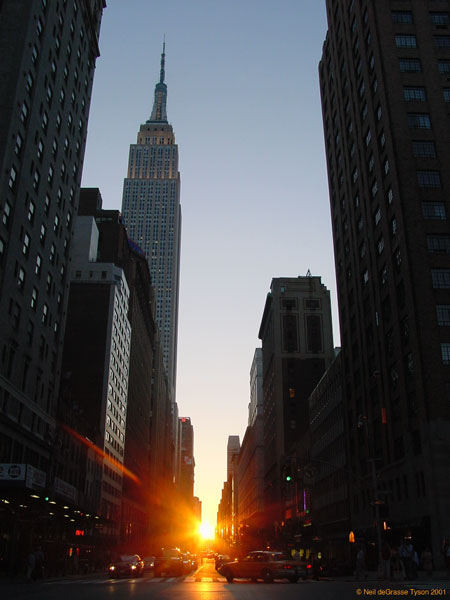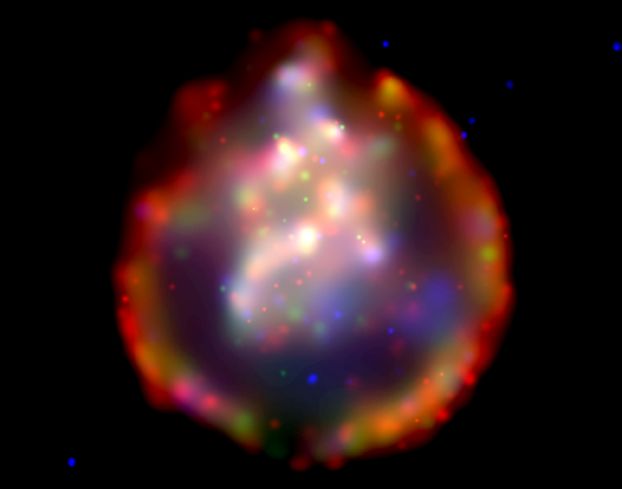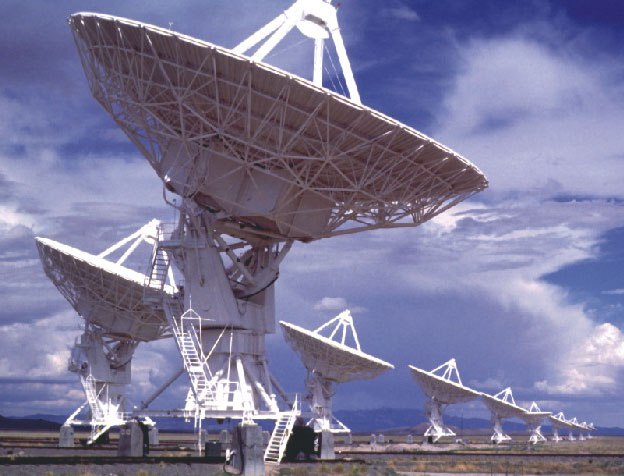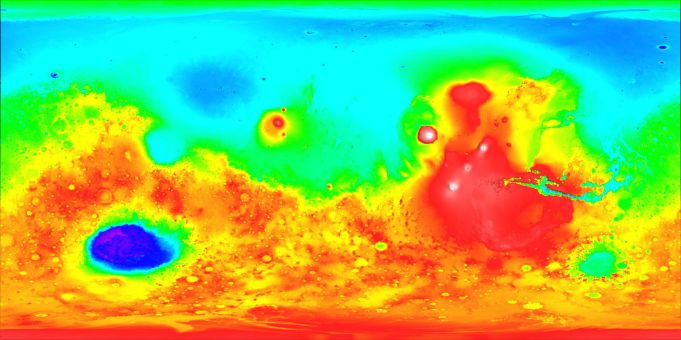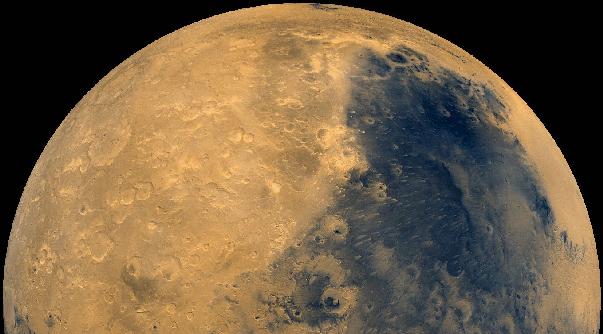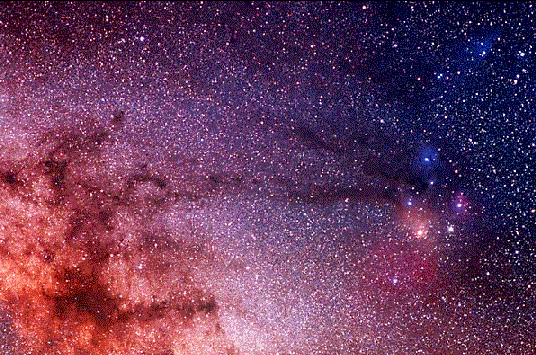| << Previous | Index | Next >> |
2015 Large spiral galaxy NGC 4945 is seen edge-on near the center of this cosmic galaxy portrait. In fact, NGC 4945 is almost the size of our own Milky Way Galaxy. Its own dusty disk, young blue star clusters, and pink star forming regions standout in the sharp, colorful telescopic image. About 13 million light-years distant toward the expansive southern constellation Centaurus, NGC 4945 is only about six times farther away than Andromeda, the nearest large spiral galaxy to the Milky Way. Though the galaxy's central region is largely hidden from view for optical telescopes, X-ray and infrared observations indicate significant high energy emission and star formation in the core of NGC 4945. Its obscured but active nucleus qualifies the gorgeous island universe as a Seyfert galaxy and home to a central supermassive black hole.
2014
Click to play embedded YouTube video.
Video Credit: ESO, José Francisco Salgado, NRAO; Music: Flying Free (Jingle Punks)
2014 Stars are forming in the gigantic dust pillar called the Cone Nebula. Cones, pillars, and majestic flowing shapes abound in stellar nurseries where natal clouds of gas and dust are buffeted by energetic winds from newborn stars. The Cone Nebula, a well-known example, lies within the bright galactic star-forming region NGC 2264. The Cone was captured in unprecedented detail in this close-up composite of several observations from the Earth-orbiting Hubble Space Telescope. While the Cone Nebula, about 2,500 light-years away in Monoceros, is around 7 light-years long, the region pictured here surrounding the cone's blunted head is a mere 2.5 light-years across. In our neck of the galaxy that distance is just over half way from the Sun to its nearest stellar neighbor, the Alpha Centauri star system. The massive star NGC 2264 IRS, seen by Hubble's infrared camera in 1997, is the likely source of the wind sculpting the Cone Nebula and lies off the top of the image. The Cone Nebula's reddish veil is produced by glowing hydrogen gas.
2013
[imghover6=http://apod.nasa.gov/apod/image/1305/lm ... i_1024.jpg]http://apod.nasa.gov/apod/image/1305/lm ... d_1024.jpg[/imghover6]Image Credit & Copyright: L. Comolli, L. Fontana, G. Ghioldi & E. Sordini
2012 Have you contemplated your home star recently? Pictured above, a Sun partially eclipsed on the top left by the Moon is also seen eclipsed by earthlings contemplating the eclipse below. The above menagerie of silhouettes was taken from the Glenn Canyon National Recreational Area near Page, Arizona, USA, where park rangers and astronomers expounded on the unusual event to interested gatherers. Also faintly visible on the Sun's disk, just to the lower right of the dark Moon's disk, is a group of sunspots. Although exciting, some consider this event a warm-up act for next week's chance to contemplate the Sun -- a much more rare partial eclipse by the planet Venus.
2011 If you're driving down a dark road on a starry night, you might want to check the odometer. Earlier this month, when traveling astronomer Dennis Mammana did he was greeted with the significant mileage reading of 186,282 miles. That's the number of miles light travels in one second. Or, if you prefer kilometers, the number you are looking for is 299,792. Mammana muses that in driving to countless observatories, star parties, and night sky photo shoots it has taken his 1998 vintage sport utility vehicle over 13 years to cover that distance. Of course, he considers his next important mileage milestone to be the distance to the Moon.
2010 A moonlit chapel stands in the foreground of this night-scape from the historic Greek island of Rhodes. The tantalizing sky above features a colorful lunar corona, where bright moonlight is diffracted by water droplets in the thin clouds drifting in front of the lunar disk. Captured in the early evening on May 17, the image is a composite of 9 exposures in sequence, each 20 seconds long. It shows star trails too, including the very bright trail of planet Venus setting, below the Moon, near the right edge of the frame. Arcing from the horizon on the right to the picture's left edge is a surprisingly colorful trail produced by space shuttle orbiter Atlantis docked with the International Space Station. Some 350 kilometers above Earth's surface, the orbiter and station pair are still bathed in sunlight. Though it might seem more appropriate when seen in skies over Rhodes, the shuttle orbiter Atlantis wasn't directly named for the legendary island of Atlantis. Instead, it was named for 1930s vintage sailing ship RV Atlantis, the first research vessel operated by the Woods Hole Oceanographic Institute.
2009 Still waters mimic a predawn sky along the eastern horizon in this peaceful scene. The picture was recorded on May 22nd from the banks of the Mullica River, in a forested region known as the Pine Barrens of southern New Jersey on the US east coast. Near the horizon at the left is an old Moon with its narrow, sunlit crescent. Mars is near picture center and brilliant Venus shines farther right. Like the terrestrial lights along the riverbank, the bright celestial beacons are all reflected in the watery foreground. Of course, most of the Moon is illuminated by Earthshine, light reflected from the sunlit side of planet Earth itself, revealing features on the darkened lunar surface.
2008
2007 Black spots have been discovered on Mars that are so dark that nothing inside can be seen. Quite possibly, the spots are entrances to deep underground caves capable of protecting Martian life, were it to exist. The unusual hole pictured above was found on the slopes of the giant Martian volcano Arsia Mons. The above image was captured three weeks ago by the HiRISE instrument onboard the Mars Reconnaissance Orbiter currently circling Mars. The holes were originally identified on lower resolution images from the Mars Odyssey spacecraft, The above hole is about the size of a football field and is so deep that it is completely unilluminated by the Sun. Such holes and underground caves might be prime targets for future spacecraft, robots, and even the next generation of human interplanetary explorers.
2006 In the center of a swirling whirlpool of hot gas is likely a beast that has never been seen directly: a black hole. Studies of the bright light emitted by the swirling gas frequently indicate not only that a black hole is present, but also likely attributes. The gas surrounding GRO J1655-40, for example, has been found to display an unusual flickering at a rate of 450 times a second. Given a previous mass estimate for the central object of seven times the mass of our Sun, the rate of the fast flickering can be explained by a black hole that is rotating very rapidly. What physical mechanisms actually cause the flickering -- and a slower quasi-periodic oscillation (QPO) -- in accretion disks surrounding black holes and neutron stars remains a topic of much research.
2005 This stunning aerial view shows the rugged snow covered peaks of a Himalayan mountain range in Nepal. The seventh-highest peak on the planet, Dhaulagiri, is the high point on the horizon at the left while in the foreground lies the southern Tibetan Plateau of China. But, contrary to appearances, this picture wasn't taken from an airliner cruising at 30,000 feet. Instead it was taken with a 35mm camera and telephoto lens by the Expedition 1 crew aboard the International Space Station -- orbiting 200 nautical miles above the Earth. The Himalayan mountains were created by crustal plate tectonics on planet Earth some 70 million years ago, as the Indian plate began a collision with the Eurasian plate. Himalayan uplift still continues today at a rate of a few millimeters per year.
2004 Today, if it is clear, Manhattan will flood dramatically with sunlight just as the Sun sets precisely on the centerline of every street. Usually, the tall buildings that line the gridded streets of New York City's tallest borough will hide the setting Sun. This effect makes Manhattan a type of modern Stonehenge, although only aligned to about 30 degrees east of north. Were Manhattan's road grid perfectly aligned to east and west, today's effect would occur on the Vernal and Autumnal Equinox, March 21 and September 21, the only two days that the Sun rises and sets due east and west. If today's sunset is hidden by clouds do not despair -- the same thing happens every May 28 and July 12. On none of these occasions, however, should you ever look directly at the Sun.
2003 A supernova explosion, a massive star's inevitable and spectacular demise, blasts back into space debris enriched in the heavy elements forged in its stellar core. Incorporated into future stars and planets, these are the elements ultimately necessary for life. Seen here in a false-color x-ray image, supernova remnant SNR 0103-72.6 is revealed to be just such an expanding debris cloud in neighboring galaxy, the Small Magellanic Cloud. Judging from the measured size of the expanding outer ring of shock-heated gas, about 150 light-years, light from the original supernova explosion would have first reached Earth about 10,000 years ago. Hundreds of supernova remnants have been identified as much sought after astronomical laboratories for studying the cycle of element synthesis and enrichment, but the x-ray data also show that the hot gas at the center of this particular supernova remnant is exceptionally rich in neon and oxygen.
2002 The most photogenic array of radio telescopes in the world has also been one of the most productive. Each of the 27 radio telescopes in the Very Large Array (VLA) is the size of a house and can be moved on train tracks. The above pictured VLA, celebrating its twenty-second year of operation, is situated in New Mexico, USA. The VLA has been used to discover water on planet Mercury, radio-bright coronae around ordinary stars, micro-quasars in our Galaxy, gravitationally-induced Einstein rings around distant galaxies, and radio counterparts to cosmologically distant gamma-ray bursts. The vast size of the VLA has allowed astronomers to study the details of super-fast cosmic jets, and even map the center of our Galaxy. An upgrade of the VLA is being planned.
2001 Wouldn't it be fun if clouds were turtles? Wouldn't it be fun if the laundry on the bedroom chair was a friendly monster? Wouldn't it be fun if rock mesas on Mars were faces or interplanetary monuments? Clouds, though, are small water droplets, floating on air. Laundry is cotton, wool, or plastic, woven into garments. Famous Martian rock mesas known by names like the Face on Mars appear quite natural when seen more clearly, as the above recently released photo shows. Is reality boring? Nobody knows how clouds make lightning. Nobody knows the geological history of Mars. Nobody knows why the laundry on the bedroom chair smells like root beer. Understanding reality brings more questions. Mystery and adventure are never far behind. Perhaps fun and discovery are just beginning.
2000 Skylab was an orbiting laboratory launched by a Saturn V rocket in May 1973. Skylab was visited three times by NASA astronauts who sometimes stayed as long as two and a half months. Many scientific tests were performed on Skylab, including astronomical observations in ultraviolet and X-ray light. Some of these observations yielded valuable information about Comet Kohoutek, our Sun and about the mysterious X-ray background - radiation that comes from all over the sky. Skylab fell back to earth on 11 July 1979.
1999 Contrasting colors trace changing elevations in this new high-resolution topographic map of Mars. Just released, the data were gathered in 1998 and 1999 by the Mars Orbiter Laser Altimeter (MOLA) onboard the Mars Global Surveyor spacecraft. The martian topography is seen to range over 19 miles between the highest volcanic peaks (white) and the lowest regions (purple). Along with the striking difference between the Red Planet's low northern hemisphere (top) and high southern regions, one of the most noticeable features on the map is the large blue-purple southern depression corresponding to the Hellas basin. Likely the result of an asteroid impact, Mars' deepest basin is about 1300 miles across making it one of the largest impact features in the Solar System. Explorations of MOLA's rich topographic database are expected to produce insights into water flows and the geologic history of Mars.
1998 This sequence of three false color X-ray pictures from the Italian/Dutch BeppoSAX satellite follows the fading glow from a gamma-ray burster. This burster triggered orbiting gamma-ray observatories on December 14, 1997 and within 6.5 hours the sensitive X-ray cameras onboard BeppoSAX had been turned to record the first image (left) of the afterglow. Each image covers a field about the size of the full moon with the position of the afterglow indicated by the white circle. The first two pictures were taken 6 hours apart, while the final picture was made 2 days after the gamma-ray burst. Initiated by an unknown but immensely powerful explosive event, gamma-ray bursts are thought to be caused by blast waves of particles moving at nearly the speed of light. The expanding cosmic fireball produces seconds-long bursts of gamma-rays and then as it slows and sweeps up surrounding material, generates an afterglow visible for many days at X-ray, optical, and radio energies. Evidence indicates that this burst originated at a distance of 12 billion light-years requiring a fantastic and extreme energy source. What could power a gamma-ray burst?
1997 For centuries, astronomers have observed Mars, patiently compiling many facts and theories. Like a distant mirror of Earth dwellers' hopes and fears for the future, Mars, the fourth planet from the sun, has inspired profound works of fiction as well. Classics of the science fiction genre with visions of Earth's alluring planetary neighbor include H.G. Wells' terrifying "War of the Worlds", Edgar Rice Buroughs' John Carter adventure series (Thuvia, Maid of Mars, The Gods of Mars, A Princess of Mars, The Warlord of Mars), Robert Heinlein's youthful "Podkayne of Mars", and Ray Bradbury's reflective and philosophical "The Martian Chronicles". Through the years scientific theories about Mars have been disproven, but the sense of wonder and adventure embodied in these works of fiction remain with us. As two spacecraft from Earth now draw close to the red planet- in dreams, desires, and a quest for knowledge - we are once again bound for Mars.
1996 The dark nebula predominant at the lower left of the above photograph is known as the Pipe Nebula. The dark clouds, suggestively shaped like smoke rising from a pipe, are caused by absorption of background starlight by dust. These dust clouds can be traced all the way to the Rho Ophiuchi nebular clouds on the right. The brightest star in the field is Antares. Many types of nebula are highlighted here: the red are emission nebula, the blue are reflection nebula, and the dark are absorption nebula. This picture has been digitally enhanced.
| << Previous | Index | Next >> |



